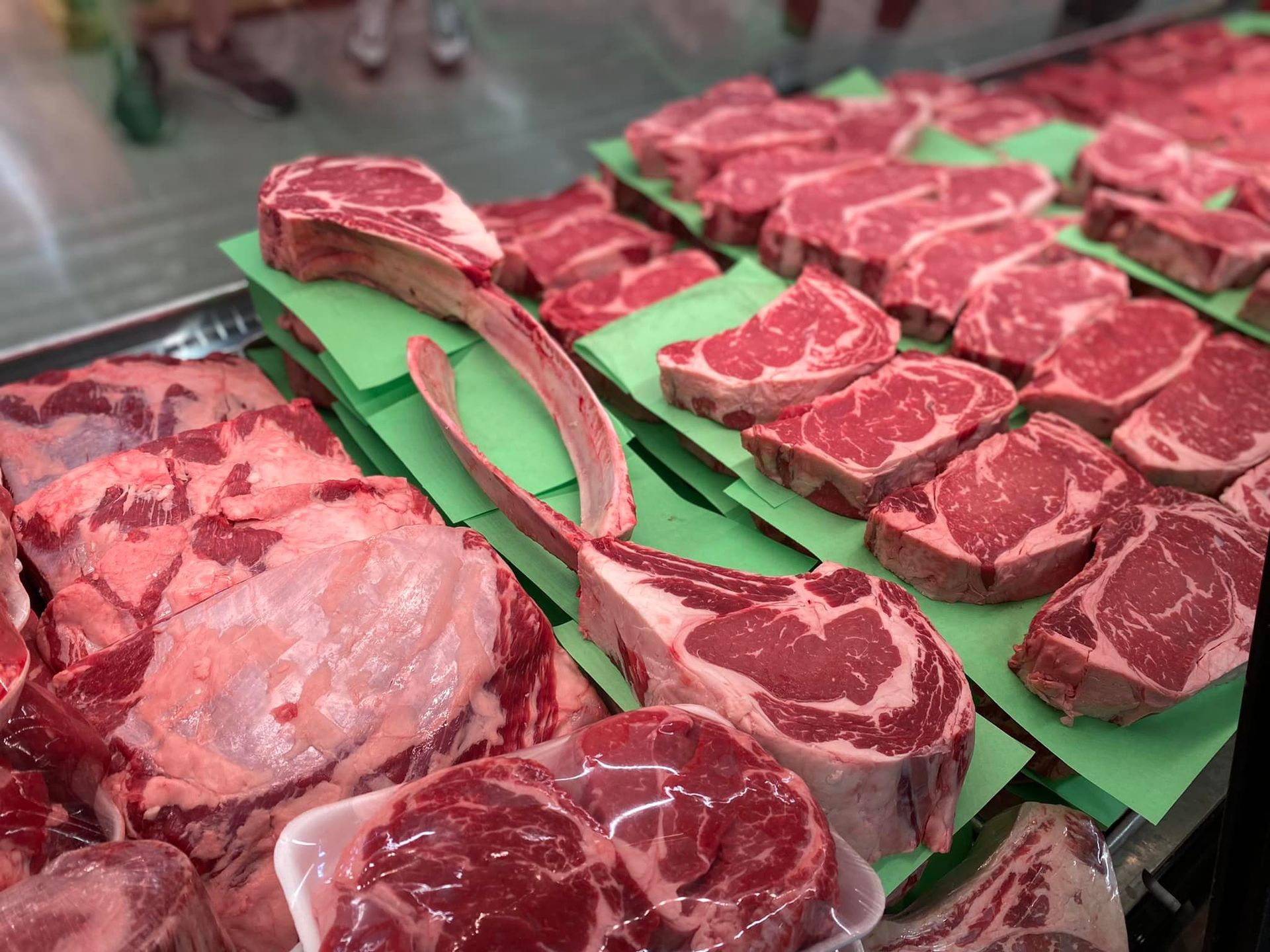Bagley Farms Meat Market Edwardsville IL: Your Best Location for Neighborhood Meat Option
Bagley Farms Meat Market Edwardsville IL: Your Best Location for Neighborhood Meat Option
Blog Article
Reveal the Art of the Butcher's Cut in a Modern Meat Market
In the ever-evolving landscape of modern-day meat markets, the butcher's cut has actually transcended its standard roots, merging age-old craftsmanship with modern techniques. Today's butchers are not simply processors of meat; they are well-informed artisans that emphasize sustainability and honest sourcing. Their know-how in picking and preparing cuts tailored to specific cooking requirements provides an unequaled dining experience. Yet, what really sets the modern-day butcher apart is their capability to forge a much deeper connection between customers and the origins of their meat. How do these masters equilibrium tradition with innovation, and what effects does this have for the future of meat usage?
Development of Butchery Strategies
The development of butchery strategies shows a rich tapestry of advancement and adaptation driven by advancements in innovation, changes in customer need, and a much deeper understanding of meat scientific research. Historically, butchery was a craft gave with generations, with approaches honed over centuries to optimize yield and flavor. The commercial revolution ushered in automation, transforming typical techniques and enabling large processing.
The mid-20th century saw butchery strategies further improved by clinical insights into muscular tissue biology and meat aging, boosting both tenderness and preference. Developments like vacuum product packaging and refrigeration expanded product shelf-life, allowing butchers to diversify offerings and enhance quality assurance. This duration additionally noted the rise of specialized equipment, such as band saws and meat slicers, which enhanced precision and effectiveness in meat handling.

The 21st century has actually presented digital innovation into the butchery realm. Computerized systems currently assist in monitoring animal provenance and enhancing cuts to fulfill details consumer choices. Furthermore, a revival in artisanal butchery has emerged, mixing standard abilities with modern knowledge to satisfy consumers looking for moral and sustainable meat options. This advancement emphasizes a dynamic interplay in between custom and development, meeting modern demands while preserving the craft's heritage.
Comprehending Meat Cuts
Comprehending the details of meat cuts is vital for both butchers and customers seeking high quality and worth. For butchers, specific cuts reflect skill and regard for the craft, making certain minimal waste and ideal return.

Comprehending muscle make-up is critical; muscle mass used extra often by the animal often tend to be tougher and are best suited for sluggish cooking approaches, while less-used muscle mass, like those found in the loin, are more tender and suitable for cooking or roasting. Experience with these distinctions equips consumers to make enlightened choices, boosting their culinary undertakings.
Choosing Top Quality Meat
Selecting the appropriate meat includes greater than just selecting a visually enticing piece from the screen. bagley farms meat market edwardsville il. The art of selecting high quality meat calls for a discerning eye and expertise of specific features that signify quality and quality. First of all, pay focus to the color; beef must have an intense, cherry-red shade, while lamb should show a soft pink tone, and pork a pale pink. This indicates the meat is fresh and hasn't been exposed to oxygen for too long.
Secondly, think about the marbling, which describes the white streaks of fat within the muscle mass. Correct marbling is a key sign of tenderness and taste, as it thaws throughout food preparation, enhancing the meat's juiciness. Remember, higher marbling commonly associates with exceptional more helpful hints top quality cuts, such as USDA Prime.
Appearance is an additional critical element; meat ought to feel firm to the touch, not get redirected here slimy or overly soft. Additionally, bear in mind the scent. Fresh meat should have a clean, neutral smell, without any sour or off-putting smells.
Coupling Cuts With Food Preparation Approaches

Conversely, tougher cuts like brisket and chuck roast are rich in collagen, which damages down right into jelly when cooked slowly. These cuts are optimal for braising or slow-moving roasting, permitting the meat to soften in time Visit Website and establish deep, complicated tastes. Cuts such as short ribs and pork shoulder fare well with slow-cooking techniques, where extended cooking times transform their durable textures right into delicious dishes.
Lamb shanks and oxtail, which require extended food preparation to soften, are excellent prospects for cooking or slow-moving simmering. These approaches coax out abundant, passionate tastes while preserving wetness. By comprehending the one-of-a-kind features of each cut, cooks and home chefs alike can raise their culinary creations, guaranteeing each meal is both satisfying and memorable.
The Butcher's Function Today
Browsing the evolving landscape of the contemporary meat market, the butcher's duty today prolongs past mere prep work of cuts. Contemporary butchers are culinary artisans, instructors, and advocates for lasting techniques.
Along with crafting precise cuts, butchers currently involve directly with clients, offering cooking recommendations and customizing selections to fit specific needs and choices. Their competence in meat aging, marbling, and taste profiles equips customers to make informed decisions, boosting their culinary experiences. This customized solution exhibits the butcher's evolving function as a relied on expert in the kitchen.
Additionally, butchers are crucial in reducing waste, using entire animals to produce diverse products such as sausages and supplies. This extensive technique not only respects the animal however likewise lines up with modern sustainability objectives. By doing this, the modern butcher embodies both custom and advancement, adjusting to an ever-changing market while maintaining the virtuosity and honesty of their craft.
Verdict
Proficiency in recognizing varied meat cuts and quality indicators encourages butchers to supply informed recommendations, straightening certain cuts with optimal food preparation techniques. By honoring historic methods while embracing modern demands, the butcher's duty stays vital in today's innovative meat market.
Report this page